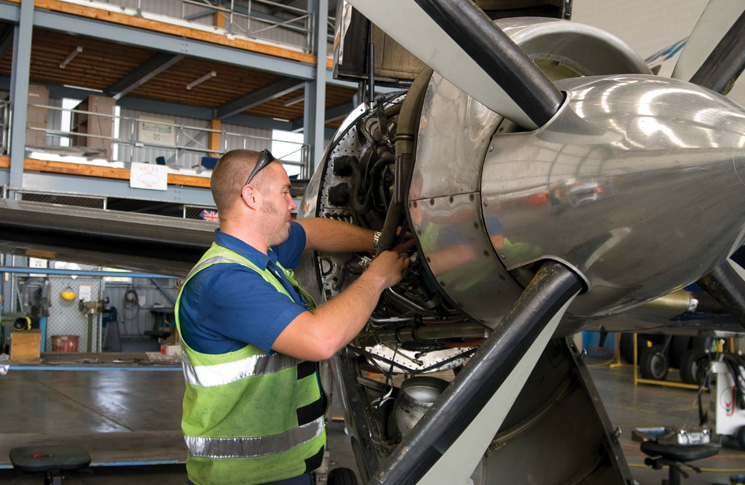1. The operation of a piston engine ‘over‑square’ is:
- when the manifold pressure is lower than RPM
- never allowed in a turbocharged engine
- when the manifold pressure is higher than RPM
- always permitted by the performance section of the POH/FM
2. What method is usually used by manufacturers of turbocharged engines to stop fuel being forced back to the fuel tanks when the pressure inside the cylinders is higher than ambient? Upper deck pressure is connected to:
- the metering valve
- the fuel induction manifold
- the fuel distribution valve (manifold valve)
- components that provide fuel to the engine such as fuel pumps and injector nozzles
3. The advantage of turbocharging a piston engine is:
- the turbocharging decreases the cubic capacity of the engine artificially
- the engine uses less fuel than normally aspirated engines
- the engine can produce sea-level performance to higher altitudes until the ‘critical altitude’ is reached
- the engine operates less efficiently at higher altitudes
4. Since the end of World War II, human factors research has focussed mainly on pilots and flight crew. Maintenance personnel were generally overlooked. This:
- allowed maintenance costs to remain low
- perpetuated a high ratio of maintenance hours to flight hours
- didn’t matter because maintenance errors have no implication for flight safety
- perpetuated zero-tolerance attitudes in maintenance organisations
5. Composite aircraft and components may be manufactured using various resins and reinforcing agents. Polyester resin is a popular resin, and is usually mixed as:
- 50% hardener with 50% resin by weight
- 50% hardener with 50% resin by volume
- the manufacturer-recommended ratio of MEKP (methyl ethyl keytone peroxide) to resin
- a high ratio of MEKP to resin to prevent it from setting too quickly
6. When layering up a composite part, an ‘inclusion’ is:
- a foreign body in the lay-up
- an air bubble in the lay-up
- a deterioration in the lay-up
- a piece of extra material added by the technician in the lay-up
7. With lead acid battery charging, there are usually 2 methods used – constant current and constant potential. The advantage of the constant current method is:
- the amp-hour input into the battery can be determined precisely by multiplying the charge current with the charge time in hours
- the battery can be charged at a high rate for an extended amount of time with little damage to the battery
- overcharging doesn’t usually cause problems to the battery life
- the voltage remains at a pre-set level while current can reach high levels
8. Stripping and painting an aircraft:
- is not considered a certifiable maintenance action
- can be carried out by anyone who is familiar with the painting process
- needs very little knowledge of aircraft to carry out the work
- must be carried out by qualified staff in a controlled environment in a CASA-approved facility
9. If flight controls are removed during the painting process:
- they can be refitted by paint shop staff
- they need to be refitted, balanced, installed and certified by a LAME and a duplicate inspection carried out
- a duplicate inspection doesn’t need to be carried out
- they can be rebalanced by calculation rather than physically using appropriate tooling
10. Hi-lok shear fasteners are manufactured from many different materials and have flat and countersunk head styles. They share a common factor with all shear fasteners:
- they do not have to be an interference fit in the hole
- when installed, they have shear nuts
- they are valuable structurally because the diameter increases when installed
- they all require special tools to install
11. MS28775 (AN6227B) o-rings:
- have an effective seal over a wide range of pressure, temperature and movement
- are manufactured from Teflon
- are manufactured from natural rubber
- cannot be used in aviation fuel environments
Answers:
- (c)
- (d)
- (c)
- (b)
- (c)
- (a)
- (a)
- (d)
- (b)
- (d)
- (a)


